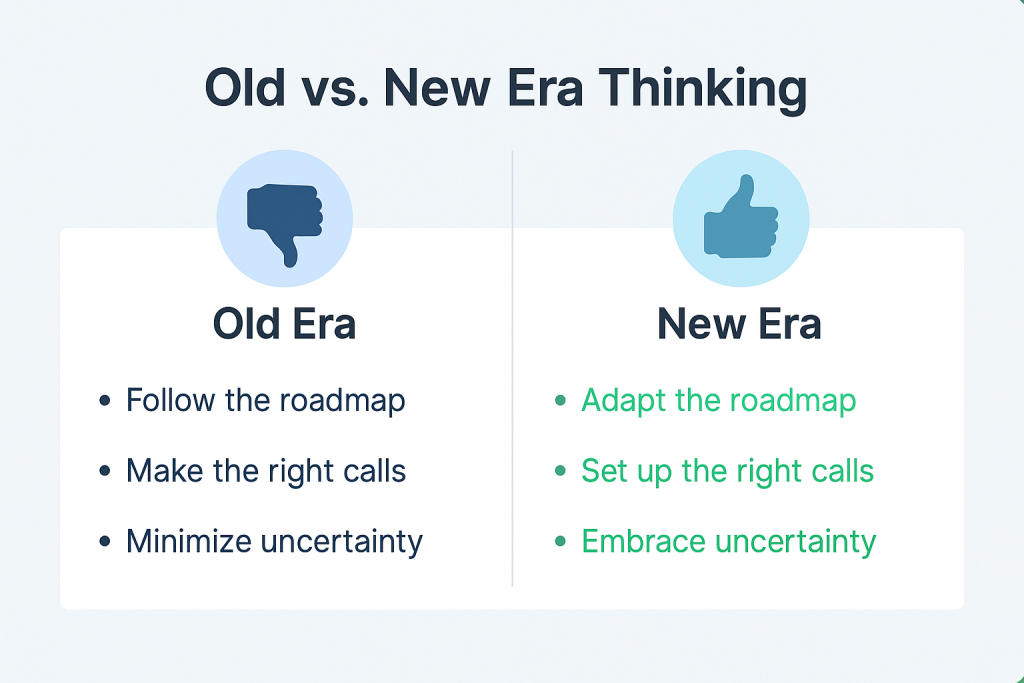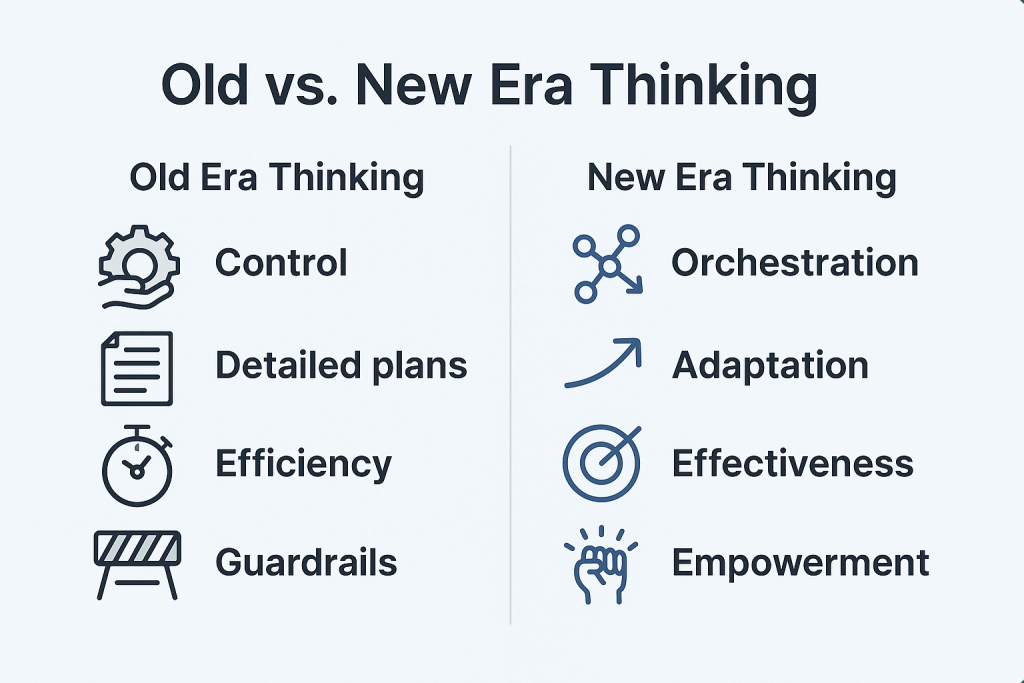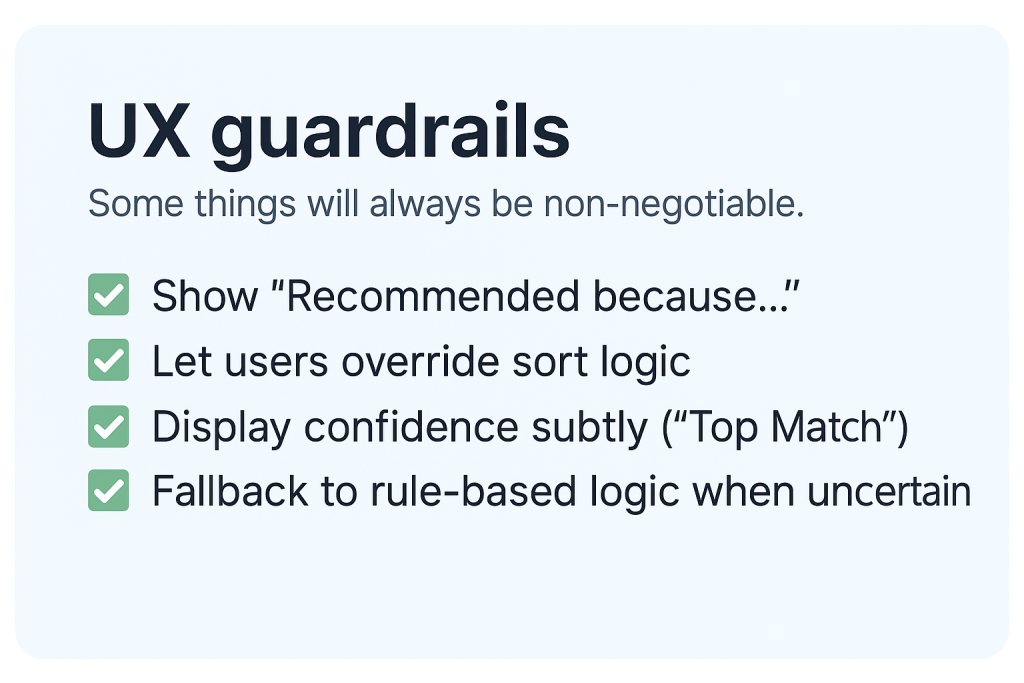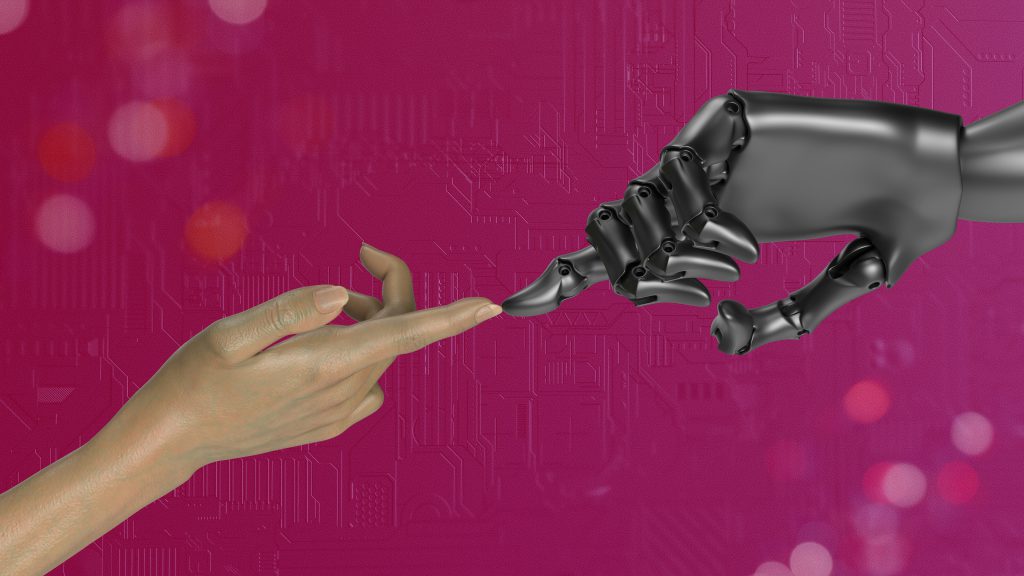Introduction
Most product managers won’t fail because they’re bad at their job. They’ll fail because they’re using yesterday’s playbook in a world that’s changed.
The root cause? Deterministic thinking—the idea that inputs should always lead to fixed outputs. But AI doesn’t work like that. And if you’re still trying to define every step, predict every outcome, or document every edge case… you’re building a product that no longer fits the system it’s in.
Let’s explore what’s changing, how this shift is showing up across industries, and how to stay ahead.
The Comfort of Deterministic Thinking
Old-school product management thrives on certainty:
- User does X → System does Y
- Everything fits neatly into a flowchart
- Predictable, testable, safe
A simple example? A pharmacy locator:
User enters ZIP → System shows 3 nearest stores
It’s clean. But it’s now outdated.
Enter AI. Exit Predictability.
In an AI-powered version of that same feature, the system might consider:
- Real-time wait times
- Whether the pharmacy is open
- Stock availability
- User preferences and past choices
- What similar users selected recently
Same input. Very different outcomes based on who you are, time of the day, or day of the week. Amazing possibilities!!

- A is close, open, stocked, and familiar. High probability = top pick.
- B is fast and open, but unfamiliar. Still good, but ranked lower.
- C was used before, but it’s closed or unclear. Low score.
Instead of a fixed rule, the model outputs a ranked list, weighted for relevance—not just distance.
It’s Not Just Healthcare
In banking, loan approval models are evolving:
- Same credit score → different decisions based on behavior patterns
In eCommerce, product recommendations aren’t based on filters alone:
- A search for “protein powder” yields different results for a vegan vs. a CrossFit athlete
AI reshapes output constantly. The same inputs no longer lead to predictable flows.
Why This Breaks PM Thinking
PMs are trained to:
- Own the roadmap
- Define clear user journeys
- Measure completion and delivery

But in AI-first systems:
- Output is model-driven, not rule-driven
- Journeys vary per user and context
- Metrics like precision and recall replace “completion”

The New Role of a Product Manager
You’re no longer just writing user stories.
You’re curating the signals that models use to adapt.
You’re not managing screens—you’re orchestrating behavior.
Your new deliverables:
- Which signals influence model output?
- How does the system respond to feedback loops?
- What does model success look like?
Documenting Probabilistic Features
Feature: AI Pharmacy Locator
Signals: Distance, wait time, stock, user history
Starting Weights:
- Distance (30%)
- Wait Time (25%)
- Stock (25%)
- User History (15%)
- Ratings (5%)
🧠 These weights evolve—either for individuals or user cohorts. Your system must be designed to learn
UX Guardrails Still Matter
Even if the system is dynamic, the user experience must feel trustworthy.
Probabilistic UX requires strong UX guardrails.
That includes:
- Transparency (why did I get this result?)
- Override options (let me sort/filter results manually)
- Confidence cues (“Best match” vs. “Alternative nearby”)
These patterns help users feel in control, even when the system is adapting on the fly.
Think of it like a GPS rerouting in traffic. Users are okay with route changes—as long as they know why it’s happening and feel they can exit at any point.

🦖 Extinct PM Mindsets in the AI Era
🚫 The Waterfall Wizard
Spent months writing 50-page PRDs. Outpaced by Agile squads shipping weekly.
🚫 The Feature Factory Foreman
Measured success by number of features delivered—not impact. Replaced by outcome-driven roadmaps.
🚫 The Mobile Mirror
Built responsive web versions for everything. Ignored native app behavior until it was too late.
🚫 The Deterministic Thinker
Still drawing perfect user journeys on whiteboards—while AI reshapes the map in real time.
Final Thoughts
AI isn’t just another tech layer—it’s a mental model shift.
PMs who thrive in this era won’t just be tech-savvy. They’ll be comfortable with ambiguity, fluent in behavior systems, and great at identifying what to unlearn.
Because in the age of AI, the riskiest mindset… is thinking you’re still in control.
